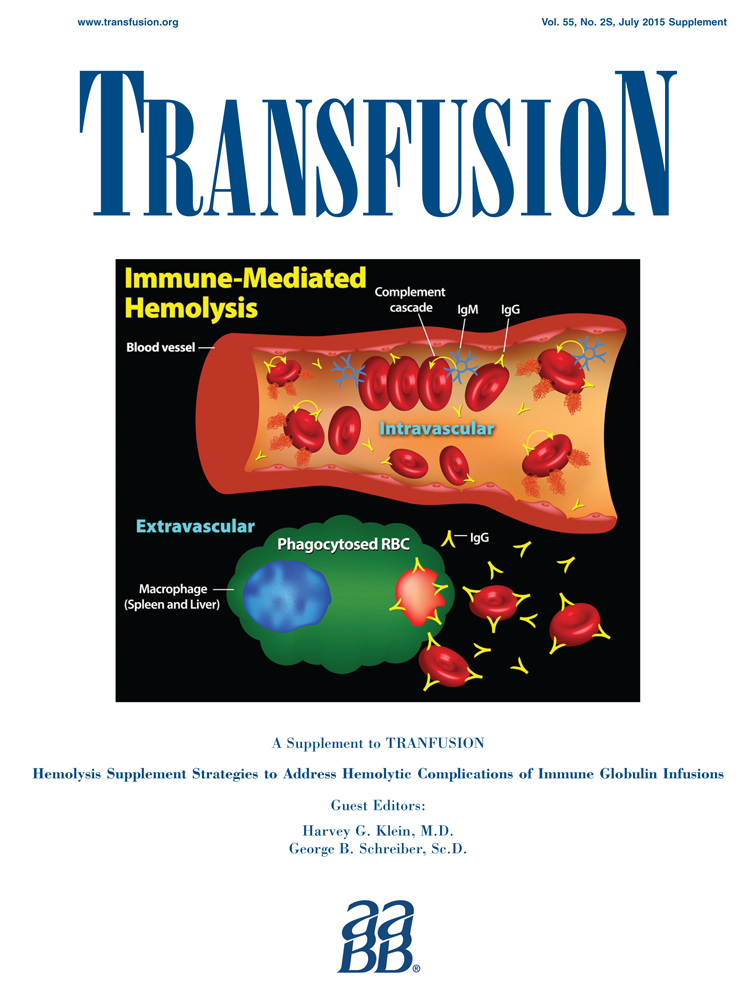Donor screening reduces the isoagglutinin titer in immunoglobulin products
Abstract
BACKGROUND
Hemolysis reaction is a rare class effect of therapy with intravenously administered human normal immunoglobulin (IVIG). Anti-A/B isoagglutinins (isohemagglutinins) originating from donor plasma are considered a probable risk factor for hemolysis. We hypothesized that screening and exclusion of plasma obtained from donors with high isoagglutinin titers from the manufacturing process would produce a meaningful reduction of anti-A/B isoagglutinin titers of the final IVIG product.
STUDY DESIGN AND METHODS
A donor screening method for anti-A isoagglutinins using an automated indirect agglutination test (IAT) in gel cards was developed. Industry-scale donor plasma pools and final IVIG product were prepared according to the manufacturing process of Privigen (human 10% liquid IVIG). Anti-A/B isoagglutinin levels were measured by IAT, direct agglutination test, and a flow cytometry–based assay.
RESULTS
Screening of plasma from 705 randomly selected donors identified 6.8% donors with high anti-A isoagglutinin titers in plasma. Exclusion of plasma from these donors resulted in a one-titer-step reduction of anti-A isoagglutinin in laboratory-scale pooled plasma. The same donor screening method applied to industry-scale production resulted in exclusion of 5.1% of donors and produced a one-titer-step reduction of both anti-A and anti-B isoagglutinin titers in the final IVIG product.
CONCLUSION
Anti-A/B isoagglutinin titers in IVIG products can be reduced on an industrial scale through implementation of anti-A donor screening, which may lower the risk of hemolysis after IVIG therapy.




